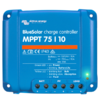When my dad was alive, stair lift batteries lasted around 4 years, when he died around 2 years, basic problem was over charging and drying them out. Stenner who made the lift seemed to expect it to be used 4 times a day, and at that it would keep batteries about right.
Using a Smart battery charger I can fully charge and maintain a lead acid battery not in use, it has four charge rates 3.8, 3, 0.8, 0.1 amp and off, the 3.8 and 3 amp rates are only used once for each charge, as soon as it moves to next rate it will not return, this means should a cell go short circuit it will not bake the battery once it has passed the first two stages.
The next two rates it alternates, 12.8 to 14.4 volt, in real terms it gives a quick pulse of charge, as once charged it returns to 14.4 very rapid. So 98% of the time the battery sits at 12.9 volt. And cared for like that a lead acid battery will likely last 10 years.
In a car either there is a computer controlling battery charge rates, as with stop/start technology, or the battery is used for 2 minutes to start car, then held at between 13.8 and 14.2 volt, the float voltage should be 13.4, but there is a limited time to recharge, so depending on the vehicle, we use a slightly higher charge voltage, using the smart charger talked about in last paragraph it can take days to recharge the battery, and the vehicle does not run long enough.
Narrow boats use in the main stage charging when on shore supply, so 14.8 volt until the amps drop to around 4 amp, then drops to 13.8 volt for last 15% of the charge. The alternators use pulse charge and capacitors to store energy between pulses, and the amount of charge is worked out by the decay time of voltage between the pulses, this is for the domestic batteries, the engine start batteries just have 13.8 volt to them shore or engine. It is common to have two 70 amp alternators linked together with a charge controller, which is an inverter which kids the standard alternator to produce more power.

These are expensive bits of kit, even the 80 amp version costs around £350.
The wind and solar MPPT chargers are similar,

the terminals
separate load from battery so it can monitor the load, the one shown is £76 with a maximum battery current of 10 amp, for a 2.5 kW heater looking at over 200 amp at 12 volt.
So not really looking at lead acid, and looking at a much larger battery, some thing live the Tesla Power Wall, now your looking as serious money, around £8,600 to £10,500, I am sure they work well, but think some thing like this

is a better option.




